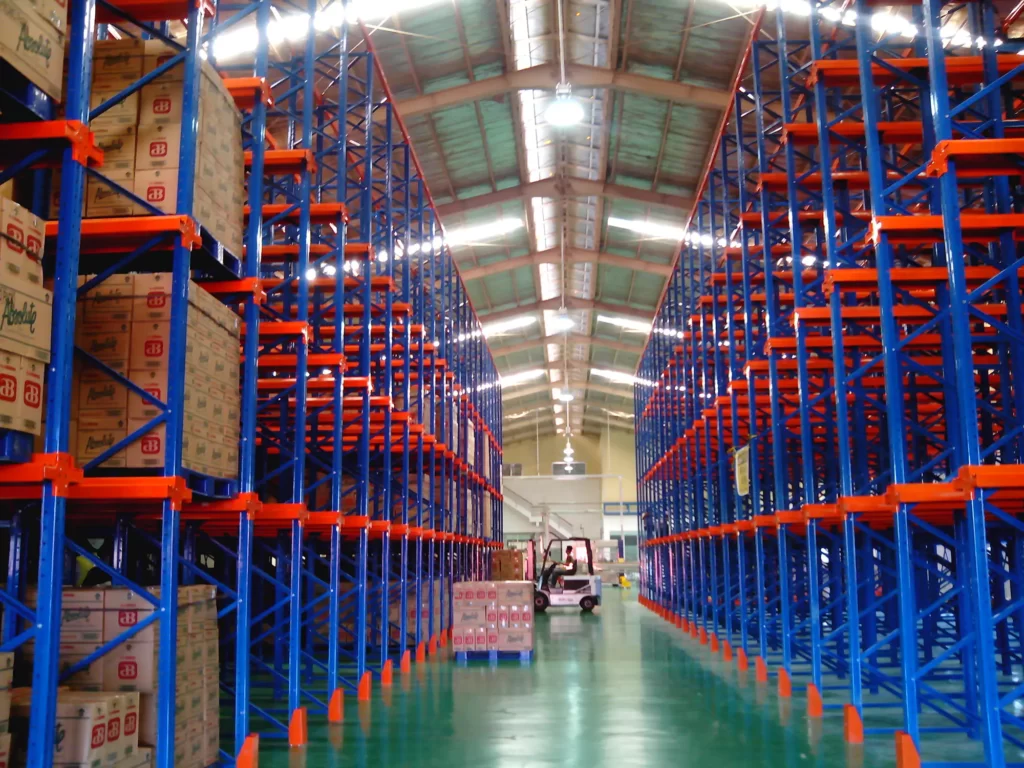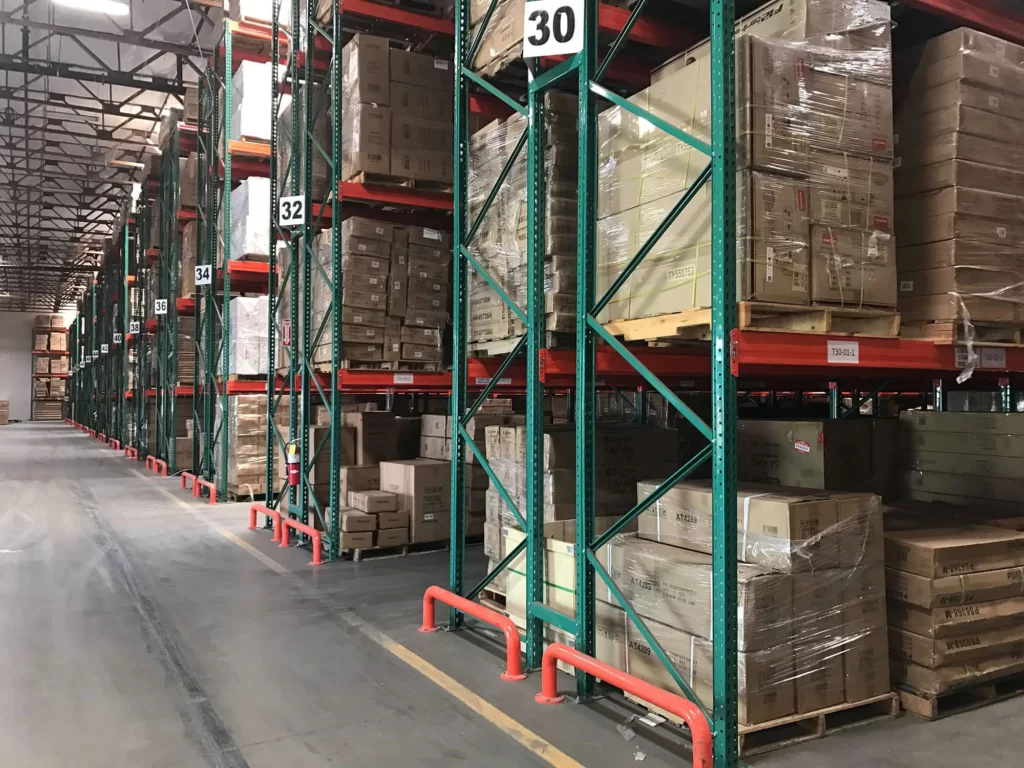Warehouse rack labels are crucial for warehouse organization. Providing crucial details like item details, location information, and barcodes on storage racks or shelves is imperative for seamless inventory management, efficiency improvement, and safety within the warehouse environment.
Warehouse rack labels make inventory management simpler and more precise, facilitating precise order fulfillment, efficient stock rotation, and increased accuracy in inventory counts. Warehouse staff can quickly locate items according to information provided on these labels, helping reduce errors while facilitating smooth operations.
Warehouse rack labels help boost efficiency and productivity by streamlining picking and replenishment processes, decreasing search time and errors. They provide real-time inventory updates without manual data entry and increase accuracy while decreasing potential mistakes and accidents.
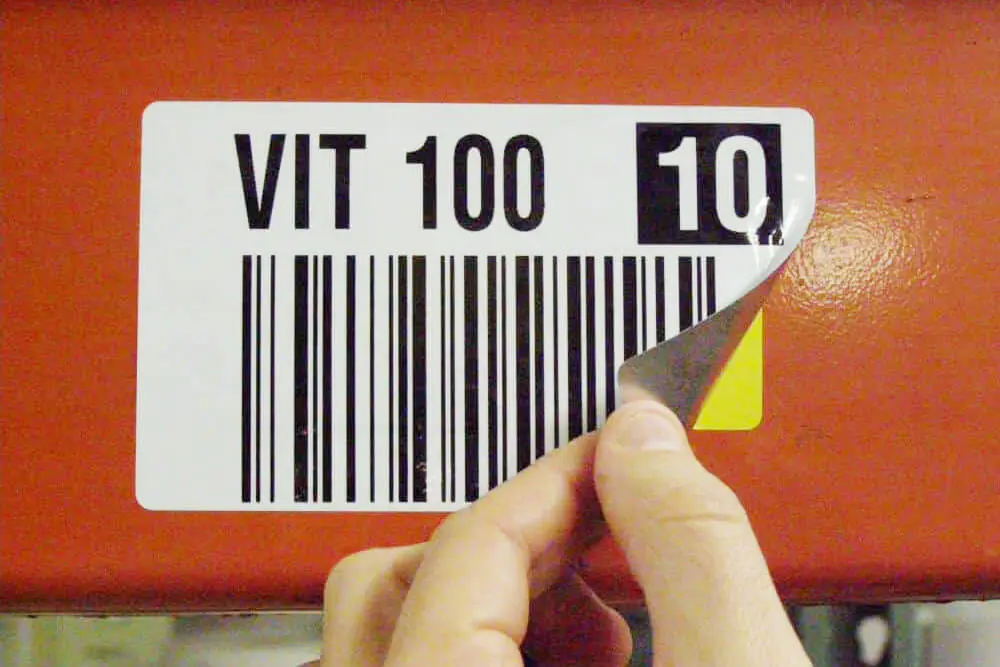
The use of warehouse rack labels to mark hazardous materials or areas ensures that proper precautions are taken, reducing the risk of unfortunate accidents. These rack labels help a big time in the organization of hazardous chemical storage and prevent accidents by clearly marking incompatible chemicals, ensuring that they are always stored separately, and extra care and precautions are taken to prevent the risk of hazardous chemical incidents.
If you are having a hard time labeling the racks in your warehouse or inventory, continue reading. In this article, we are going to discuss all warehouse rack labels, from their benefits and types to implementing best practices. By the end of this piece, you will have a good idea about where to begin and how to go about using warehouse rack labels to streamline your warehouse operations.
Benefits of Warehouse Rack Labels
Warehouse rack labels provide many benefits that significantly contribute to efficient warehouse operations, including enhanced inventory management, increased productivity, and safety and risk reduction in the warehouse environment.
Improved Inventory Management
Warehouse rack labels play an integral part in optimizing inventory management practices and can offer numerous advantages, including:
- Improved Inventory Accuracy: Warehouse rack labels enhance inventory accuracy by providing clear identification and location information that enables precise tracking and management of inventory, helping reduce errors, minimizing discrepancies in stock levels, and ensuring greater control.
- Facilitating Efficient Stock Rotation: Warehouse rack labels provide effective stock rotation practices by providing information such as batch numbers, expiration dates, or production dates. This helps ensure that older items are used or sold first to prevent product obsolescence or spoilage risks.
- Enabling precise order fulfillment: With clearly labeled racks and bins, warehouse personnel can quickly locate items for order fulfillment with accurate picking times due to item details or barcode information displayed on labels.
Increasing Efficiency and Productivity
Utilizing warehouse rack labels has proven to bring significant efficiencies and productivity gains.
- Simplified Picking and Replenishment Processes: Labeled racks and bins make it easier for warehouse staff to locate items, cutting search time significantly while improving workflows and expediting order fulfillment and inventory replenishment processes quickly. This facilitates faster order fulfillment as well as more effective inventory replenishment.
- Decreased Errors and Quickened Picking Time: Warehouse rack labels fitted with barcode or QR code scanning are an efficient way to automate data entry processes and reduce the human error associated with manual recording, speeding up picking processes for increased efficiency.
- Improved Organization and Ease of Locating Items: Warehouse rack labels contribute to creating an efficient warehouse layout by offering clear indications of items’ locations, making it easier for staff to locate them quickly. This organization reduces time spent searching, thus improving operational efficiency overall.

Safety and Risk Reduction
Warehouse rack labels also play a vital role in improving warehouse safety and lowering risks within their environment.
- Avoids accidents and injuries: With properly labeled racks and shelves in warehouses, hazardous materials or areas can be identified quickly so warehouse staff can take necessary safety precautions against accidents, injuries, and potential harm to employees. This helps decrease the risks of accidents, injuries, and potential harm among staff members.
- Minimizing damage to goods and equipment: Warehouse rack labels provide organized storage solutions, ensuring items are placed appropriately while preventing mishandling or misplacing, lowering risk, and minimizing costly replacement or repair needs.
- Compliance with safety regulations: Warehouse rack labels can include safety information, warnings, or compliance instructions that ensure compliance with safety regulations and help avoid penalties while creating a safer working environment and showing their commitment to employee well-being.
Types of Warehouse Rack Labels
Warehouse rack labels come in many varieties, each providing specific benefits and features. Here are a few popular types:
Barcodes and QR Codes
Warehouse operations use barcodes and QR codes extensively for efficient inventory tracking and management, with barcodes consisting of parallel lines representing encoded information, while QR codes use two-dimensional storage using black-and-white squares that store this data. Scannable barcodes or QR code readers make quick data access possible while simultaneously decreasing manual errors and increasing efficiency.

Location-Based Labels
These labels provide details regarding the exact locations of items within a warehouse, typically including aisle numbers, bay numbers, and level indicators. Warehouse personnel uses location-based labels to easily retrieve their goods by following clear directions from aisle numbers or bay numbers on these labels to their exact spot in the warehouse. This help improves organization and significantly decreases search time, contributing to accurate inventory management and effective space utilization.
Product-Specific Labels
These labels focus on providing information related to individual items, such as SKU (Stock Keeping Unit) numbers or descriptions associated with them. For instance, SKU numbers, part numbers, or product descriptions make accurate identification and retrieval much simpler. Depending on a warehouse’s needs and requirements, labels can also be customized further with additional data specific to certain categories or products, streamlining operations while improving inventory management.
Color-Coding Systems
Color-coding systems utilize visual cues such as color-coded labels to quickly identify different product groups and categories quickly, increasing warehouse personnel’s ability to locate and retrieve items efficiently. Perishable items might have one color-coded label, while non-perishables may have another – color-coding. This allows quick visual identification and retrieval.
RFID Labels
RFID (Radio Frequency Identification) labels use radio waves to transfer data from tags to readers. Each RFID label consists of a small chip with an antenna for wirelessly transmitting and receiving information, providing fast and accurate scanning of multiple items simultaneously without direct line-of-sight access for easy inventory management. They reduce manual handling errors as well as manual handling time for warehouse operations. RFID labels help not only streamline warehouse operations but also make life simpler for warehouse staff members.
Batch Number Labels
Batch number labels are an efficient way of tracking inventory based on specific production or manufacturing batches, with each one receiving its own identifying number that’s printed on its label. This ensures traceability and quality control by making it easy for warehouse personnel to identify items from each batch when needed – particularly useful in industries with products with expiration dates or batch-specific tracking needs, like food and pharmaceuticals, such as tracking product expiration dates.
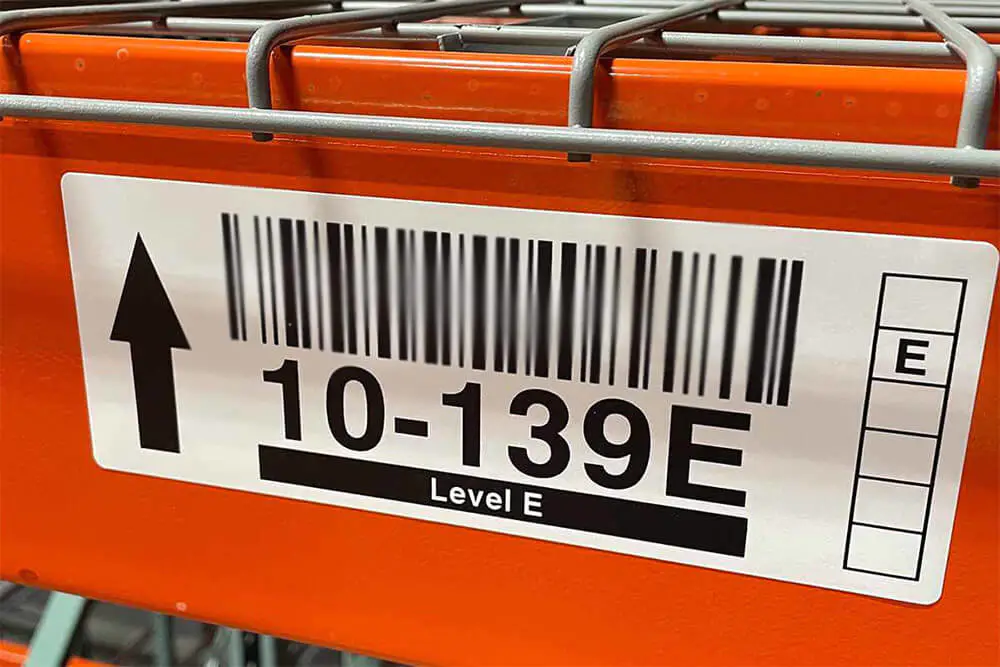
Hanging Labels
Hanging labels can be suspended from racks or shelves using hooks or hangers, offering flexibility and ease of use in situations with limited space for traditional adhesive labels or when frequently moving items requires relocation of inventory. Hanging labels are easily visible and accessible, making them the ideal solution for dynamic inventory that changes frequently. These tags are very convenient as they can be quickly moved or rearranged as needed.
By employing different kinds of warehouse rack labels, warehouses can significantly improve inventory management, streamline operations, and enhance overall efficiency.
Implementing Warehouse Rack Labels
Implementing warehouse rack labels requires careful planning, strategic design, and selection of suitable label types, techniques, and materials. Here is how the process of successfully implementing warehouse rack labels works:
A. Planning and Designing Labeling Systems
- Warehouse Assessment and Needs Analysis: Before installing rack labels, conduct an in-depth evaluation of the warehouse layout and needs, such as storage systems used, aisle configurations, and item volumes. Additionally, understand its unique challenges to design an efficient labeling solution.
- Establishing a Labeling Plan and Strategy: Conceive an effective labeling strategy by outlining label placement, information to be included on labels (i.e., item details, location, and barcodes), consistency standards to maintain, and visibility factors to consider for scanning purposes as well as compatibility with inventory management systems.
B. Labeling Techniques and Materials
- Select appropriate label materials: When it comes to label selection for warehouse environments and inventory characteristics, adhesive or magnetic labels might be most suitable. They can withstand temperature variations as well as exposure to chemicals.
- Tips for Label Placement and Durability: Ensure labels are clearly visible and accessible locations on racks or bins, durable enough to withstand handling, movement, and environmental factors within your warehouse, as well as protected with protective overlays or holders to safeguard them against damage.
C. Integration with Warehouse Management Systems (WMS)
- Connecting Rack Label Information to WMS: For real-time data synchronization and efficient inventory tracking and management, integrate rack label information with your warehouse management system (WMS). Doing this ensures accurate inventory tracking and efficient stock control.
- Streamlined Updates: Make an efficient connection between rack labels and WMS to ensure immediate updates, providing accurate inventory information, order fulfillment, and informed decision-making.
Following these implementation steps will enable warehouses to leverage rack labels effectively for inventory management, streamlining operations, and increasing overall efficiency.

Best Practices for Warehouse Rack Labels
Implementing warehouse rack labels involves more than simply attaching labels to racks and shelves; it involves following best practices to maximize their use and benefit for maximum effectiveness. Here are a few suggestions that will help warehouses maximize the benefits of rack labels:
A. Consistency and Standardization
- Standard Labeling Approach: Create a standard approach for labeling racks, shelves, and bins throughout your warehouse. Achieve uniformity through consistent label design, placement, and content helps streamline navigation while decreasing confusion among warehouse personnel.
- Ensuring labels are uniform and easy to comprehend: To create easily read labels, make use of legible fonts in appropriate sizes with consistent colors for labels that can be read from a distance or low light environments. Lastly, it is essential that label information be easily understandable by customers at a distance or low light environments.
B. Regular Maintenance and Updates
- Conduct regular inspections and label maintenance: Conduct periodic checks of rack labels for signs of wear, damage, fading, non-legibility, or detachedness to ensure label accuracy and adherence to labeling standards.
- Updating labels to reflect changes in inventory or layout: As inventory or warehouse layout changes occur, rack labels should also be revised accordingly to identify and retrieve products and items accurately. Product descriptions, SKU numbers, or any other pertinent details must also be changed as necessary for accurate retrieval and identification.
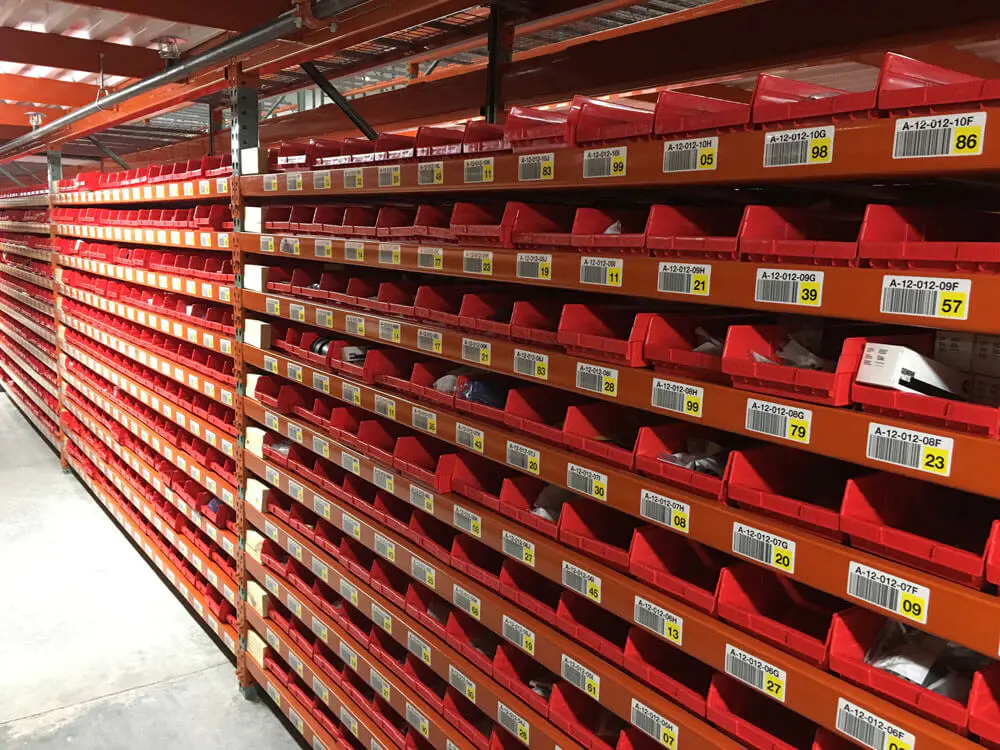
C. Employee Training and Communication
- Training Staff on Label Reading and Interpretation: Educate warehouse personnel on how to accurately read and interpret information displayed on rack labels, familiarizing them with labeling standards for optimizing warehouse operations.
- Communication Channels for Label Information: When communicating any updates or modifications related to labels to the warehouse team, ensure there are clear communication channels so all parties are kept abreast of any alterations or additions to their labeling systems. This ensures everyone remains up-to-date and informed of any modifications or additions.
By adhering to these best practices, warehouses can ensure rack labels are used effectively, leading to more streamlined operations, accurate inventory tracking, and enhanced efficiency.
Conclusion
Warehouse rack labels are indispensable tools for streamlining warehouse operations. By taking advantage of their benefits, warehouses can achieve improved inventory management, increased efficiency, and enhanced safety. However, to harness their full potential, it is vital that warehouses invest both time and energy in designing an effective labeling system to use warehouse rack labels effectively.
By leveraging proper label usage for their warehouse operations, warehouses can streamline processes, reduce errors, and ensure efficient inventory management. This will lead to improved customer satisfaction, reduced costs, and competitive advantage in today’s dynamic business world.
Remember that successfully implementing warehouse rack labels requires tailoring them specifically to each warehouse’s needs and regular monitoring to ensure constant improvement. Leveraging the power of warehouse rack labels, you can turn your warehouses into well-run hubs of productivity.




